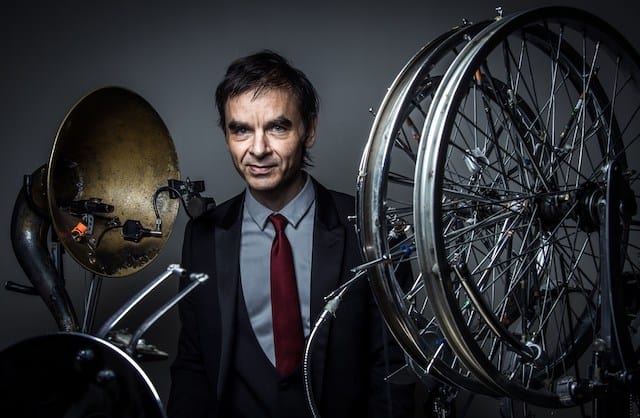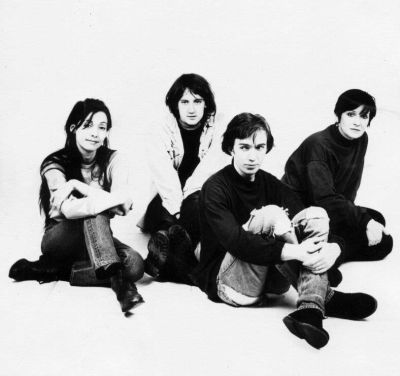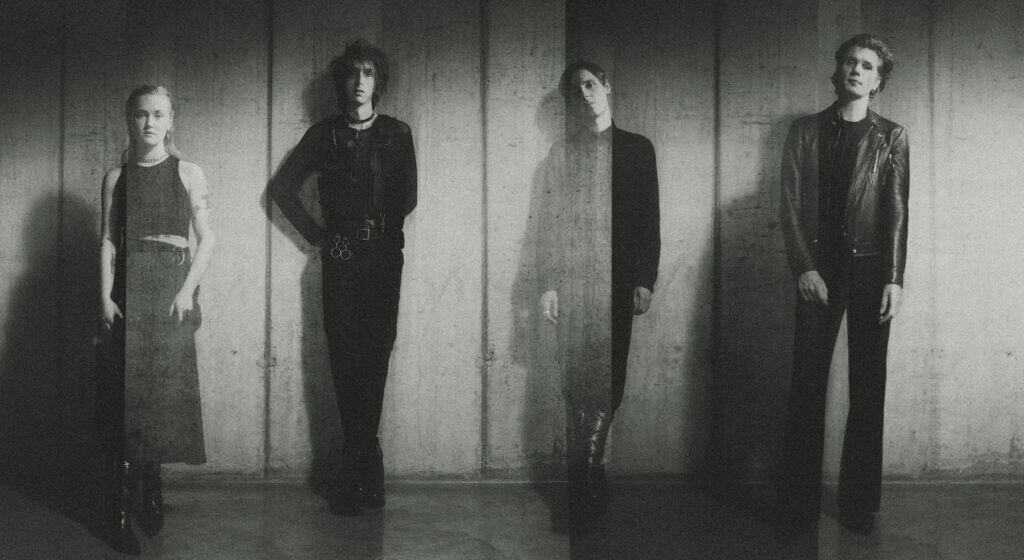With music that radiates the fantastical energy Tim Burton’s movies, Thomas Truax gothic artistry has solidified him as a prominent player within the steampunk genre. Shaped by a career spanning over thirty years, the American songwriter, performer, and inventor, has now settled in Birmingham.

Dom sat down with the extraordinary multi-media artist to discuss why he ditched working with a band, his fascination with mechanics, and a future collaboration with Siouxsie and the Banshees’ drummer Budgie.
“Some people who know me will think it funny that I say this, but I think I’ve gotten a little bit more easy going,” says Thomas. “But at the same time, I’ve never lost this drive to keep going with it. For a long while, especially when I spent many years doing bands, I just thought if I can figure out anything to do that I enjoyed, that I would do it, because this business is ridiculous and it’s expensive and there’s just so much struggle and strife.”
He reveals that it was actually a short stint as an animator that solidified his want to pursue music, but after several disappointing events, he decided that this time, he would embark on that journey alone.
“One of them was just getting frustrated with people quitting bands and such…especially drummers who weren’t showing up for rehearsal,” says Thomas.
“At the same time, I always enjoyed building things and I don’t know why I didn’t put two and two together at first. In retrospect it seems like an obvious thing, but mainly I hadn’t really decided to build a solo touring stage set-up.
“Initially, I wanted to try playing with a drum machine. I had digital drum machines for a while, but then I thought I don’t like that idea, because when you go see something live you want to see it in action – you want to see something happening.”
Thomas goes onto explain that this discomfort at seeing purely electronic sounds live, inspired him to create instruments that allowed the audience to see his process of making music.
“I felt really disappointed when I’d go out to see something I liked the sound of, and it was just a guy sitting behind a laptop. Not that it didn’t sound great, but it was like what am I paying for? I could be lying on my couch with a pair of headphones. So, it was a combination of the idea that okay, so I’d like to have a mechanical drum machine, but I’d also like it to be something you could look at.
“I’ve always been fascinated by how things work and what makes that go…I like the idea that there are literal explosions happening inside an engine and that’s projecting it forward.”
He describes his transition into being a one-man-band as a gradual takeover of instruments – initially the idea of performing alone was a source of anxiety for the musician.
“I didn’t want to do a solo thing at all actually,” he confesses. “I didn’t like the idea that if you should run into trouble on the road, that you’d be all by yourself. It’s a frightening idea, but having been there a few times, it always works out.”
“You’ve always got something made out of metal nearby if you can’t use your instruments,” he jokingly adds.
One thing that has had a monumental impact in his decision to carry on pursuing music regardless of the inevitable ups and downs, is the supportive community he has around him. Music, he explains, was the bridge he needed to break out of his own shell and connect with other people.
“[What] brought me to making music, aside from the fascination with sound that resonated with me, is that whole thing that it is a kind of language and a kind of communication.
“I was very shy, and I found that I could communicate better with people if I broke the ground by doing something musical or visual. Once that ice is broken, I still feel excited to be able to communicate with people. It’s kind of a victory over feelings or shyness or an inability to communicate.”
As modern-day interconnectedness via the internet makes the music industry more competitive than ever, Thomas reiterates the importance of having a following in order to survive as a performer.
“It’s essential to cultivate some kind of audience if you’re trying to make a living from music. I guess I’m fortunate to live in a time where the internet [allows] independent artists to try and spread what they’re doing from their own headquarters from all over the world.
“Had it been earlier, it was either about getting signed to a big deal or you lose. I’m fortunate in that way. I think I’ve got a lot of catchy tunes, but it isn’t really mainstream music.”
Stage presence and set up is particularly important to the performer; he suggests that visual elements are integral to his work.
“When I hear music, I always visualise things. I’ve always liked film. I’ve always been interested in visual arts. I think there’s an element in what I do of trying to paint a picture and tell a story through sound.
“I think one of the things that turned me back to music when I started doing animation, is that I find it more economical, on an artistic level, to build something with one’s imagination in a combination of words and imagery, instead of building a whole scene.”
As with all visual art, the reception and interpretation of said art can vary dramatically – but this doesn’t faze the eccentric performer.
“I’m a big believer in the concept of somebody listening to a piece of music [and interpreting] the lyrics to be something completely different to what you intended. Typically, it’s not totally different but sometimes somebody will tell me something about a song I’ve written, and I’m surprised by their interpretation.”
Despite his long career, Thomas admits that he struggles at times with comparing his success with others. His voice is heavy with memories of times he was overlooked as an artist, and when asked about his journey with self-belief, he answers with a genuine honesty that is truly admirable.
“Sometimes I look at these people and think how can I attain that? I’ll never attain that,” he admits.
“It would be nice to reach a much wider audience. I love playing these smaller venues…there’s something special about underground music shows.
“But it is frustrating when you’re billed on a festival, and you drag all your gear through mud for years and you’re still bottom billing on the poster, or you’re not even on the poster at all. You just think that ‘I’m always gonna be this person at the bottom.’ There are times where I’ve struggled and really do think that I’m failing at this.”
Regardless of the emotional ups and downs of his career, there are exciting things in the pipeline for the multi-media artist – including a new record in collaboration with Budgie (Peter Edward Clarke), the drummer of Siouxsie and the Banshees.
Ultimately, Thomas Truax has learnt that the most valuable quality in a musician is resilience.
“Even the most successful people I’ve met, have gone through periods of thinking ‘I won’t get there. I can’t get there,’ but it’s mainly about not giving up,” he says.
“You have to push yourself out on that stage and open up your heart, and open up your imagination, and hope that people come inside and take a ride with you. I think that very act is a kind of conversation.”
Interview: Dom Smith / Words: Jay Mitra / Image: Jason Bridges






